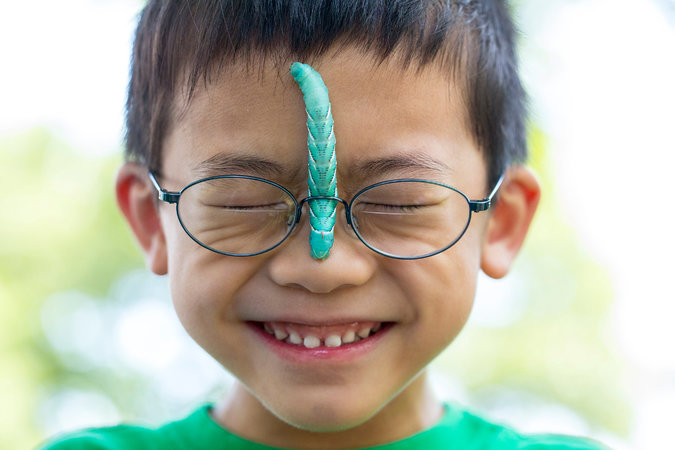So now that you know some of the lingo, here is how you can begin to take the steps of identifying your own child’s anxiety hierarchy. First, though, is some background research taken from Edwards’ (1978) case study of an entomophobic and arachnophobic child. This research is our basis for bibliotherapy.
In this journal article written by Susan Edwards in Elementary School Guidance and Counseling journal, a case study regarding a little boy named was examined. “Little Tom”, as he was called, was incredibly fearful of bugs and spiders. His case was examined under the guise of Arnold Lazarus’s multimodal learning theory (Lazarus 1976). According to Edwards (1978), this case study helps to add to the general understand of fear-reduction in children.
Tom was 4 1/2 years old and intensely afraid of “anything outside—bugs, birds, spiders.” (Edwards, 1978). Edwards (1978) first gives brief background on Tom’s history. He began to have scary dreams at age 3 1/2. Tom’s fear of spiders eventually was generalized to all insects (something quite normal in phobic people—a fear begins as one thing but is eventually generalized to things that resemble or remind the person of that initial fear). Tom began to refuse to play outdoors with his friend and whenever he encountered a flying object (bug, spider, bird), he would run into the house in hysterics.
To treat Tom’s entomophobia, bibliotherapy desensitization was used, a common form of phobia treatment for young children. First, a fear hierarchy was made (an understanding of what objects caused the most fear down to the least fear) and picture books were selected about each fear and read to Tom at the end of each day. Tom’s parents began with the things he feared least (flying planes) and worked their way up to what he feared most (flying insects). According to Edwards (1978), Tom began to emulate the behavior of the main characters in the books—he began to adopt a strong desire to learn about names of different insects and birds and even asked his dad to make a birdhouse with him.
As a parent, what are some steps in which you can emulate Edwards’ (1978) research?

1. Identify your child’s fears with your child.
Make this something that you can do together. This opens the lines of communication with your child and can help them open up to you about their fears. Communication is key in anxiety disorders. This might also give you, as a parent, a window into your child’s brain and thought processes. While it might not seem rational to you, remember that anxiety is inherently irrational and beyond your child’s control.
2. Take a trip to the library together.
This can be a family affair! Who doesn’t love reading?! Bring the whole gang to the local library or bookstore. Having your child help choose books that correspond with their fears is the first step in giving your child some sense of agency and autonomy over their anxiety. This can be extremely gratifying for the child, as they will likely feel like they have regained some sense of control.

3. Get reading!
Read at every chance you can get! Before bed, on a rainy day, with the whole family. Incorporate this into the daily routine so it becomes habit for your child. When the whole family is involved, the stigma or shame that your child might be feeling can be eliminated, at least a little bit.

